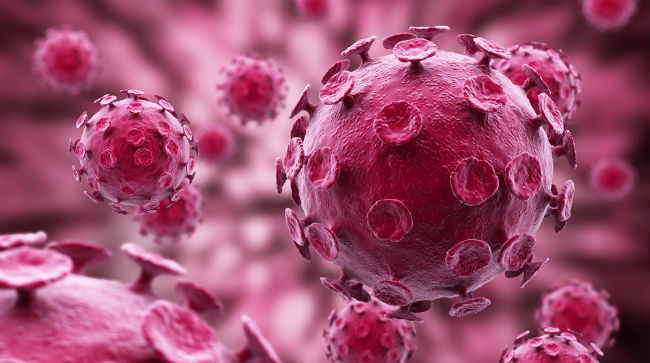
Viruses are an enormous problem right now. Zika is spreading in South America. Ebola is an ever-present worry in Africa. And they’re evolving all the time to resist antivirals and medical treatments. So IBM has decided to create something that they can’t evolve around: The Macromolecule.
Virus Vs. Human
To understand the Macromolecule, we need to understand how viruses replicate. Viruses essentially hijack our cells and use them as factories to make more viruses. The virus bonds to various receptors on a cell or differing parts (depending on the virus), splices in its genetic code, and uses the cell to stamp out more copies of itself.
We generally deal with viruses one of two ways, by vaccinating against them and by inhibiting the symptoms and spread. Otherwise, you more or less just have to ride the virus out and hope it doesn’t do any major damage, but some, like herpes, are going to set up shop for good. So the macromolecule is a huge step forward by offering treatment that can be applied after the virus appears.
The macromolecule is a polymer engineered to be anti-viral Velcro and it deals with a virus in three ways. One, it attracts viruses to it directly, by bonding with them. Two, it coats immune cell receptors in mannose, a type of sugar, that prevents viruses from attaching. And three, it changes the pH of a virus, rendering it inert.
Antiviral
This is great in of itself. Think of it as a flu shot that goes to work after you get the flu. But more important is the viruses that it’s been tested on.
One of the less discussed, but very dangerous, viral infections is dengue fever. There are 100 to 200 million infections of dengue every year, and 22,000 of them are fatal. Worse, once you’re infected with dengue, that puts you at higher risk of getting dengue again. So while the odds of fatality are small, you’ve got a guillotine looming above you. Work on a vaccine is still ongoing, complicated by the fact that there are at least five and possibly more serotypes of the disease. So for now, the best most countries can do is limit the number of mosquitos in the air.
The macromolecule, though, would be used to prevent dengue before it spreads. Instead of hoping the virus just dies, the macromolecule can both keep it from spreading internally and help prevent infection.
Not Quite A Magic Bullet
It’s worth noting that this isn’t quite a “magic bullet” when it comes to all disease. The macromolecule won’t be able to deal with non-viral infections, so we’ll still be relying on antibiotics to treat diseases like tetanus and pneumonia, and antifungal medications to prevent mycosis. And thus we’ll still have the issue of antibiotic resistance to deal with. But if the macromolecule works as intended — and it will need careful study before it’s available — it’ll be an enormous step forward in the treatment of everything from the flu we all hate to the Zika we all fear.
(via IBM)






